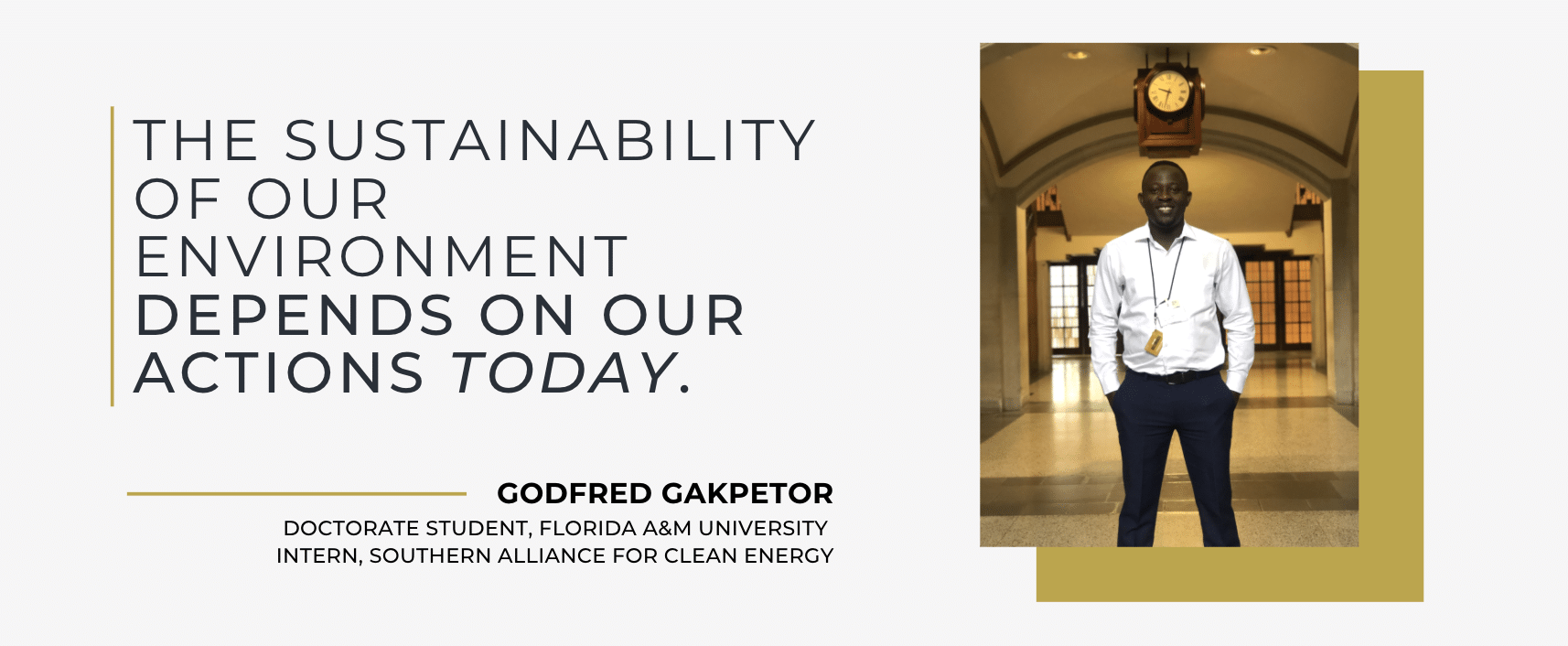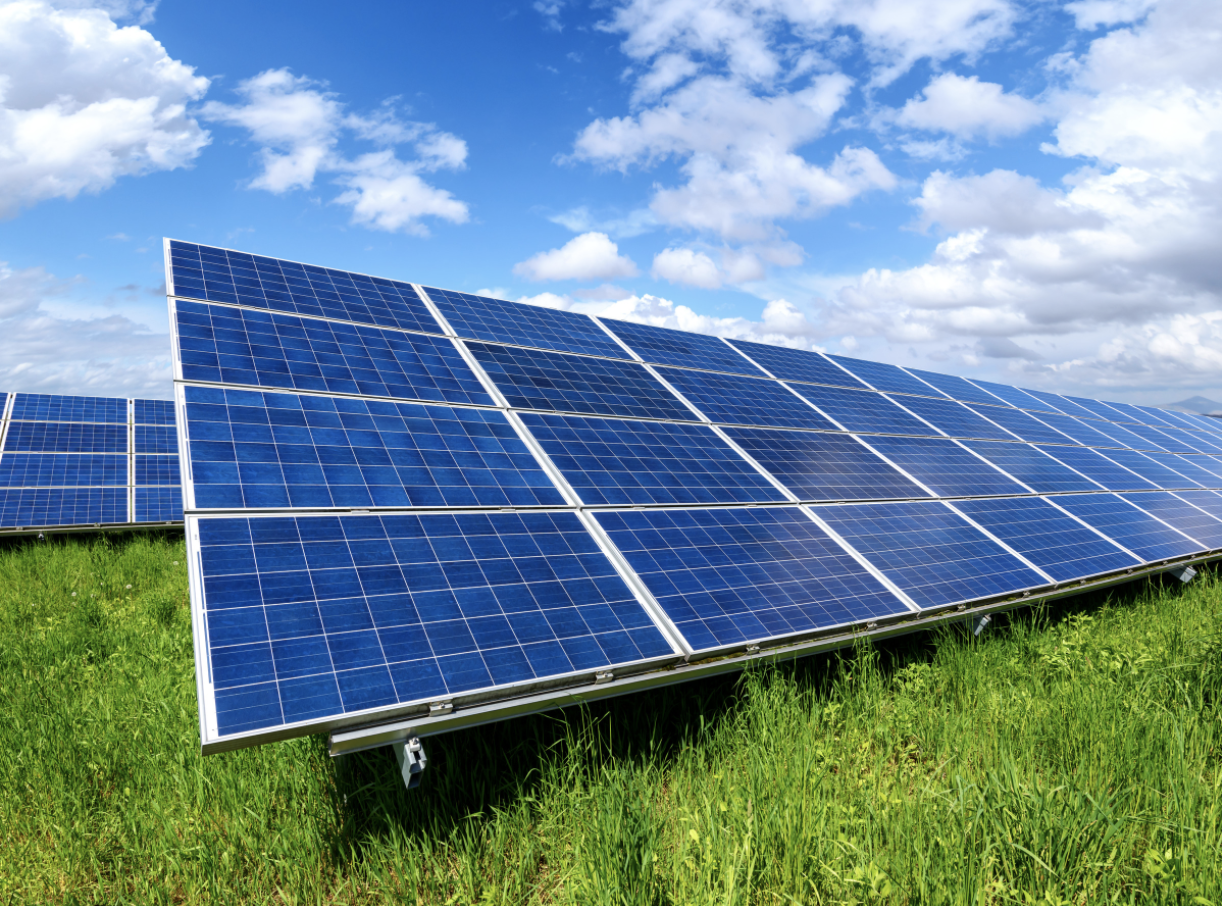Working with SACE for these few weeks has been an eye-opener to learn more about clean energy, I would not have gained this experience if not for the opportunity given to me by SACE.
Guest Blog | June 30, 2021 | Energy Policy, Florida, UtilitiesGodfred Gakpetor, a Florida Agricultural & Mechanical University (FAMU) doctorate student, was a summer energy policy intern with the Southern Alliance for Clean Energy in 2021. Some of the work Gakpetor focused on during his internship with the SACE team included the analysis of utilities passing fuel costs and risks on to customers, analyzing energy burden mapping, and utility rate case filings in Florida.
Developing Skills Beyond the Classroom
Internships give students the hands-on experience they need in their field. Internships are essential to developing key skills that you can’t get in a classroom and it is nothing but an honor to work with Southern Alliance for Clean Energy (SACE) for the 2021 summer internship. The practicality of working is not something that can be taught in a textbook. It was a dream come true because I always want to learn more about environmental policy and clean energy. During these few weeks working with SACE, I was able to learn more skills such as multitasking, communicating, and dealing with deadlines that are different when you are working.
Networking as a student is very important and if not for this internship opportunity, I will not have the opportunity to network. For these few weeks, I had the opportunity to network with staff members, board members, the executive director, and members outside SACE that are in clean energy and saving the environment. Some of this network will go beyond this internship.

I am learning more than I ever expected. In the beginning, being my first internship since moving to the U.S. from Ghana, I was a bit nervous and didn’t know what to expect. But I was surprised with how I was welcomed and introduced to things that I would not have learned in any number of classes. With the support and help from my supervisor, Maggie Shober, and other SACE staff, I am really enjoying my time.
Crunching the Clean Energy Numbers
Working in the utility team has made me fully aware that clean energy is needed to sustain our environment. Currently, I am working on “Analysis of Utilities Passing Fuel Costs and Risks on to Customers,” which will be published later this summer. This is an interesting project because findings from this study will help stakeholders focus more on generating electricity with clean sources.
Electricity generation is the second leading cause of industrial air pollution in the U.S. because most of our electricity comes from coal, fossil gas, nuclear, and other non-renewable power plants. Producing energy from these resources takes a severe toll on our environment, polluting our air, land, and water while renewable and clean energy sources – like solar, wind, and energy efficiency – can be used to produce electricity with fewer environmental impacts. It is possible to make electricity from renewable energy sources without producing carbon dioxide (CO2), the leading cause of global climate change.

Also, renewable energy sources such as wind, solar, hydro, and geothermal do not entail fuel costs or require transportation, and therefore offer greater price stability. This will help customers save money and it will lead to reducing climate change.
I am not surprised SACE is a leader in clean energy. SACE promotes responsibility and equitability for a clean and safe environment.